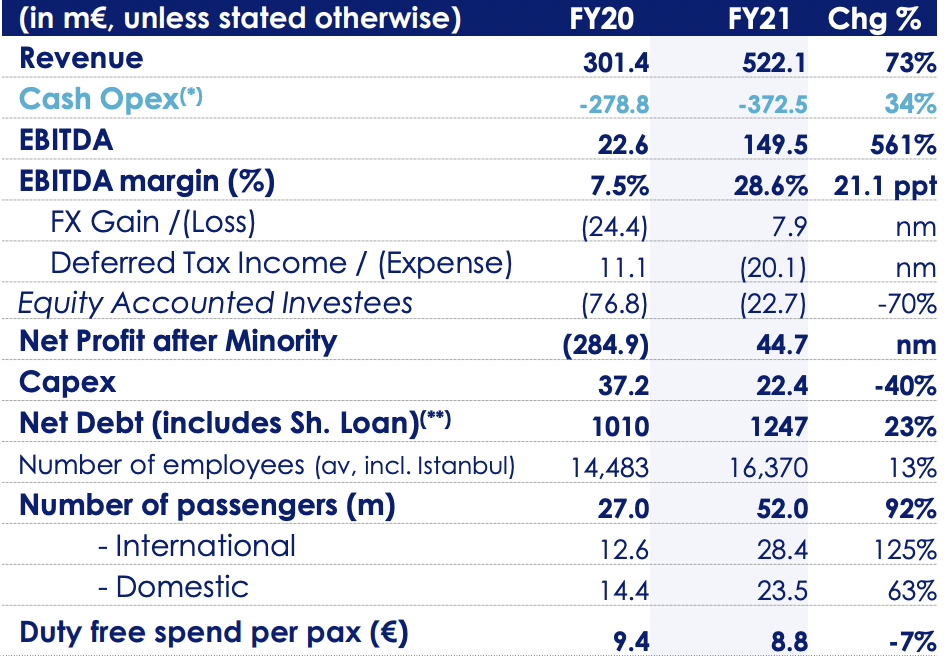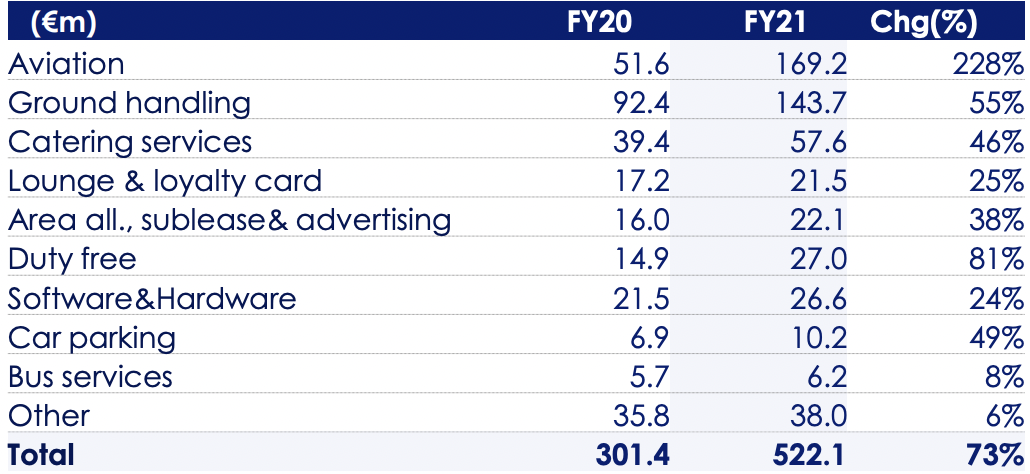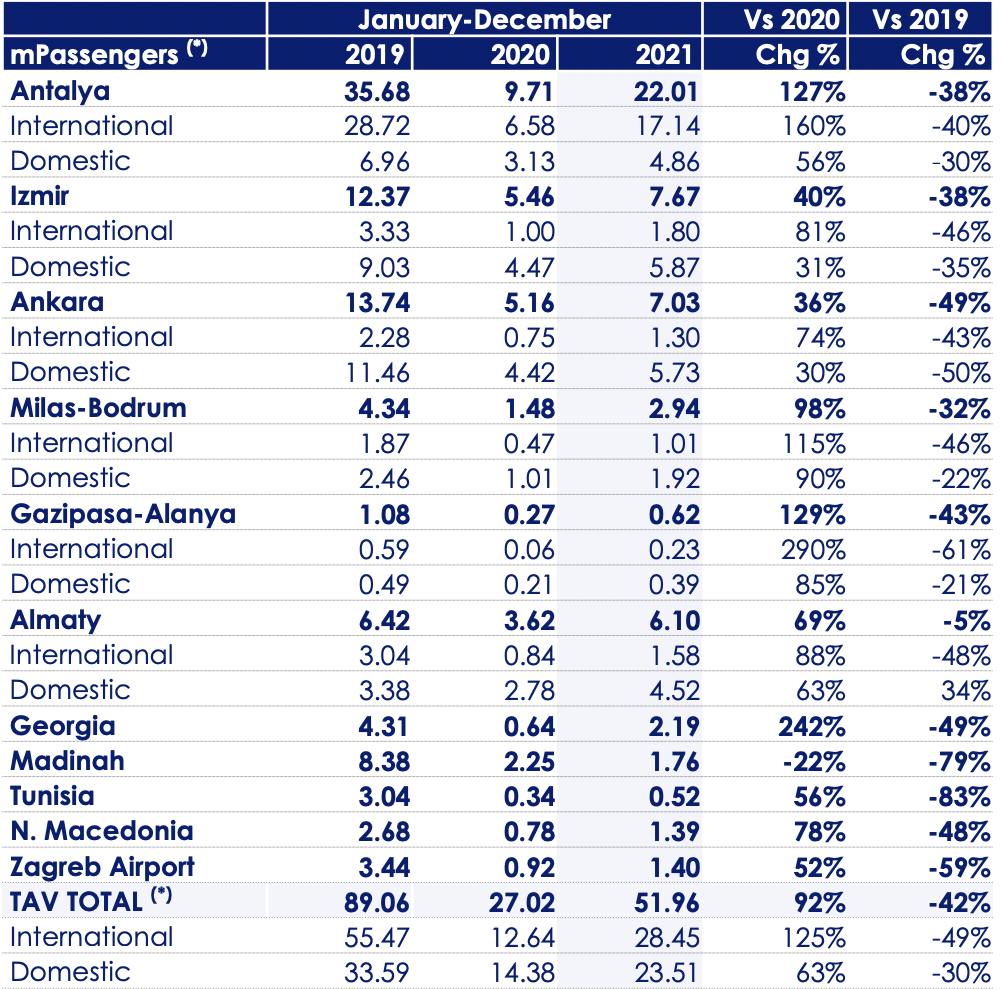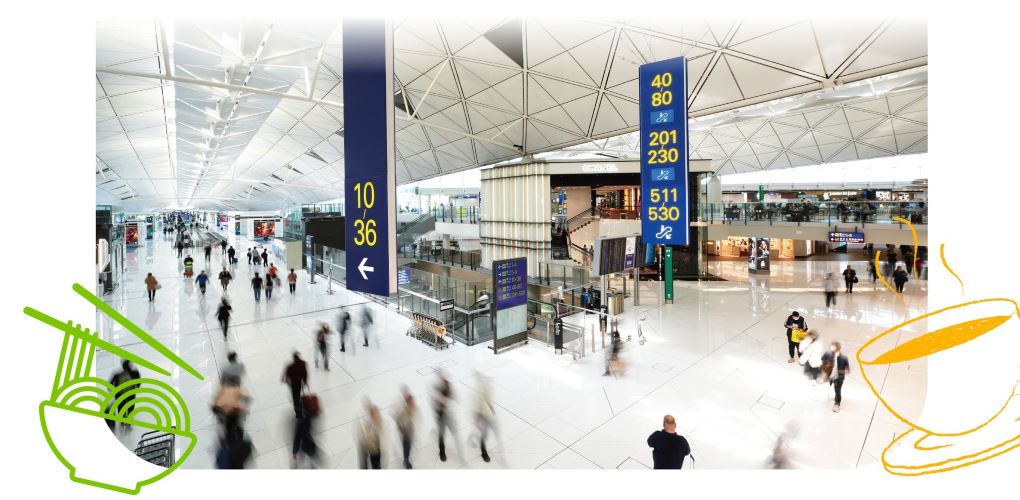
TURKEY. TAV Airports today reported full-year results for 2021, with revenue climbing by +73% year-on-year to €522 million. A solid recovery was aided by a strong second-half performance and the addition of Almaty International Airport in Kazakhstan to the TAV portfolio.
EBITDA of €150 million was over five times 2020 numbers, while the group returned to net profit (€45 million) after posting a loss of €285 million a year earlier.
Revenue in the second half reached 89% of comparable 2019 levels, with EBITDA at 77% of 2019 levels in the period.

Passenger traffic reached 52 million in the year, up +92% on 2020. Crucially, H2 traffic was 76% of 2019 levels, with international volumes at 69%. The recovery of international traffic accelerated in Q4 to 80% of Q4 2019 numbers.
Duty free revenue (for TAV Airports, 50% shareholder in ATÜ Duty Free alongside Gebr. Heinemann) of €27 million was up +81% year-on-year. Spend per passenger slipped by -7% year-on-year to €8.80 in 2021. For ATÜ Duty Free, Q4 revenue recovered to 78% of 2019 revenue levels. F&B revenue (BTA Catering) rose by +46% to €57.6 million.

TAV Airports noted the strong resilience in Turkish traffic, with major source markets (Russia, Europe, Middle East) short-haul and recovering faster. Currency depreciation has made Turkey a more attractive destination, with the Turkish Travel Agents Association expecting 2022 tourist arrivals to reach 2019 levels.
TAV Airports Holding Executive Board Member & CEO Sani Sener stated: “2021 for us was a year of significant passenger recovery, massive inorganic growth and value creating corporate actions.
“We have communicated for a while that the industry has expected the global passenger recovery to be two-pronged where leisure and short haul destinations recover the fastest. In line with these expectations, TAV Airports’ passenger recovery towards 2019 levels has been significantly faster than most peers.
“International travel has been gradually normalising for the last two quarters as COVID-19 vaccine documentation has become mostly sufficient for cross-border mobility. There are still many exceptions to this rule of thumb but the exceptions are decreasing as time passes. Thanks to gradual normalisation, in the third quarter, we reached the highest levels of passenger recovery since the beginning of the pandemic. The recovery then accelerated during the fourth quarter as more unhindered international mobility became possible.”











